Hello Blurtters,
On this occasion I would like to share you five photos of beautiful Bunga Tembelekan (Lantana camara) that I took using the camera of a smartphone. Hope you like it.
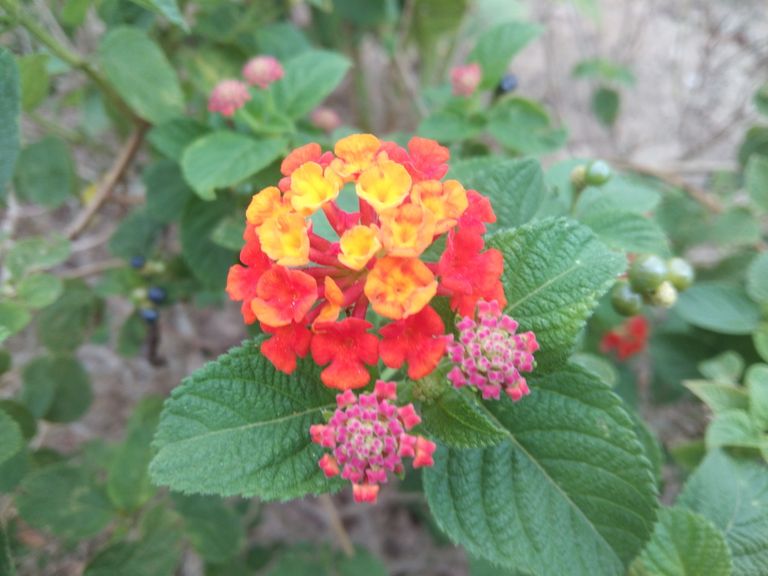
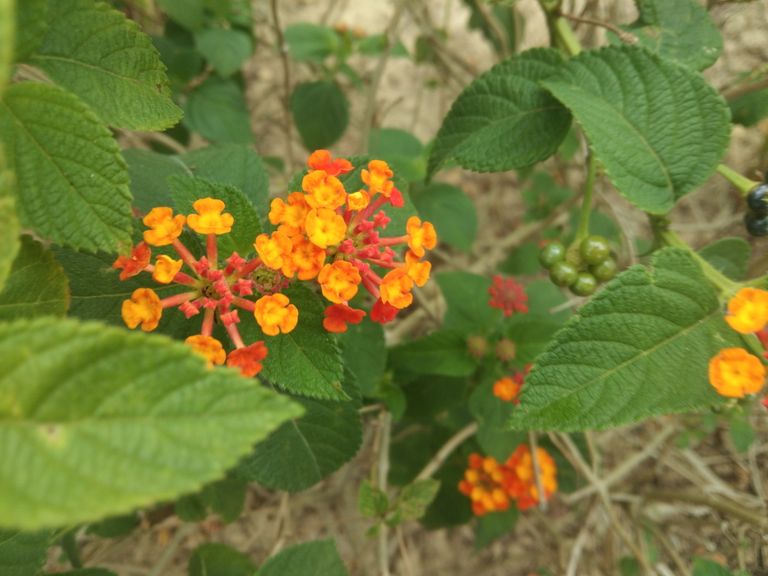
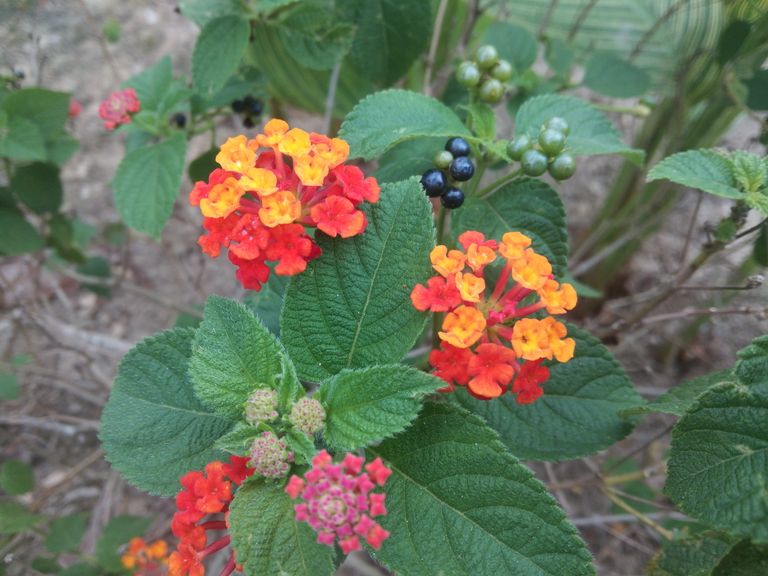
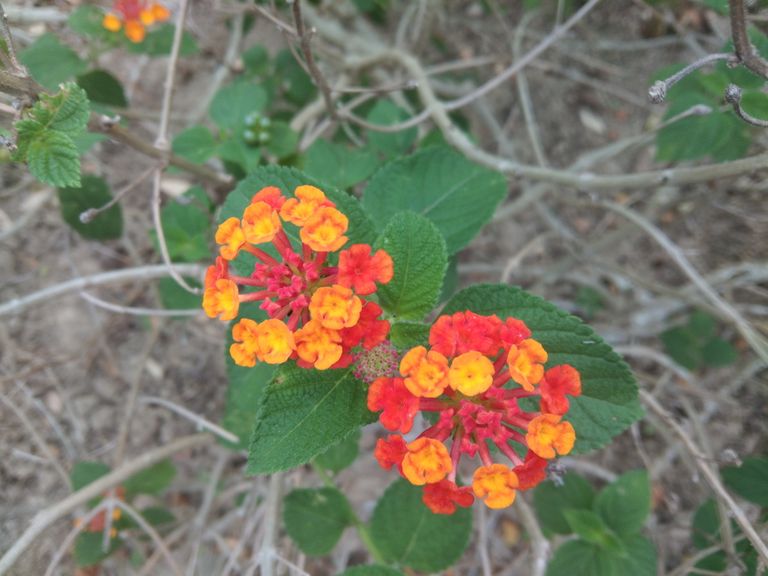
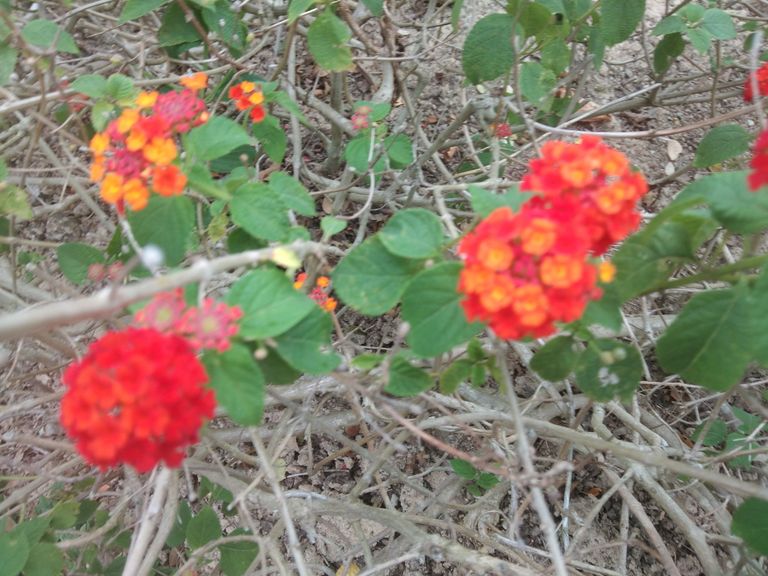
Cheers,
Larasbpn
Tanaman tembelekan termasuk ke dalam keluarga tumbuhan verbenaceae. Awalnya tanaman ini berasal dari kawasan tropis Amerika. Bunga tembelekan tumbuh bergerombol dan memiliki warna yang bervariasi, seperti putih, kuning, merah, ungu, jingga, dan pink.
Tanaman in mengandung berbagai zat yang penting, daunnya mengandung lantadene A dan B, serta minyak (humulene), juga mengandung asam lantat, p-cymene, terpidenem R caryophyllene, a pinene, dan asam lantonalat. Bunga dan akarnya bersifat hemostatik. Akarnya pun memiliki sifat analgesik, antitoksik, dan antipiretik.
Berikut manfaat dan khasiat tanaman tembelekan untuk kesehatan:
Mengobati berbagai jenis penyakit kulit
Manfaat tanaman tembelekan bagi kecantikan kulit adalah kemampuannya dalam menyembuhkan jamur kulit, radang kulit, dan eksim. Rebuslah daun tembelekan, sambiloto, dan daun ketapang cina. Gunakanlah air rebusan itu untuk mencuci bagian tubuh Anda yang terkena jamur kulit, radang kulit, atau eksim.Mengobati permasalah tulang dan sendi
Tembelekan mampu menyembuhkan pegal linu, nyeri karena rematik, nyeri pinggang, nyeri otot, dan keseleo. Selain itu, tanaman tembelekan juga bisa mengobati bengkak, luka, dan memar. Caranya dengan melumatkan daunnya dan langsung menempelkannya pada bagian tubuh yang terkena bengkak, luka, dan memar tersebut.Meningkatkan nafsu makan
Manfaat lain dari daun tembelekan adalah jika Anda mengalami kurang nafsu makan, konsumsilah air rebusan kulit pohon tembelekan ini untuk meningkatkan kembali nafsu makan Anda.Mengobati masalah pada sistem pencernaan
Mengonsumsi seduhan tujuh gram bunga tembelekan bubuk menggunakan segelas air panas dapat mengobati diare dan sakit perut.Berbagai manfaat lainnya
Tanaman tembelekan pun dapat dimanfaatkan unuk masalah rongga pernapasan, seperti batuk pada anak, asma, batuk berdahak, dan TBC paru. Tembelekan pun rupanya mampu mengobati kencing bernanah, keputihan, dan kencing terlalu sering. Sakit gigi, sakit kepala, dan bengkak pada kelenjar limfa pun dapat diobati dengan tanaman tembelekan ini.
Itulah beragam manfaat yang dapat diperoleh dari tanaman tembelekan. Walaupun banyak manfaatnya, ingatlah bahwa Anda harus menghindari pengonsumsian tanaman ini secara berlebihan, sebab dapat menyebabkan pusing dan muntah-muntah. Semoga informasi ini bermanfaat bagi Anda.
Lantana camara is a perennial, erect sprawling or scandent, shrub which typically grows to around 2 metres (6+1⁄2 feet) tall and form dense thickets in a variety of environments. Under the right conditions, it can scramble up into trees and can grow to 6 m (20 ft) tall.
The leaves are broadly ovate, opposite, and simple and have a strong odour when crushed.
Lantana camara has small tubular-shaped flowers, which each have four petals and are arranged in clusters in terminal areas stems. Flowers come in many different colours, including red, yellow, white, pink and orange, which differ depending on location in inflorescences, age, and maturity. The flower has a tutti frutti smell with a peppery undertone. After pollination occurs, the colour of the flowers changes (typically from yellow to orangish, pinkish, or reddish); this is believed to be a signal to pollinators that the pre-change colour contains a reward as well as being sexually viable, thus increasing pollination efficiency. In frost-free climates the plant can bloom all year round, especially when the soil is moist.
There are five major flower colour varieties in Australia:
- Pink – Bud: pink; Middle ring: yellow opening with pale yellow petals; Outer ring: orange opening with pale or dark pink petals
- White – Bud: cream colored; Middle ring: yellow opening with light yellow petals; Outer ring: orange or yellow opening with lilac petals
- Pink-edged Red – Bud: pink to reddish pink; Middle ring: orange opening with light yellow to orange petals; Outer ring: orange opening having two pink to red petals
- Red – Bud: blood red; Middle ring: yellow opening with yellow petals; Outer ring: red throat having red petals
- Orange – Bud: orange; Middle ring: yellow to orange opening, yellow petals; Outer ring: orange opening with orange petals
Lantana camara fruits
The fruit is a berry-like drupe which turns from green to dark purple when mature. Green unripe fruits are inedible to humans and animals alike. Because of dense patches of hard spikes on their rind, ingestion of them can result in serious damage to the digestive tract. Both seed and vegetative reproduction occur. Up to 12,000 fruits can be produced by each plant.
The native range of Lantana camara is Central and South America; however, it has become naturalised in around 60 tropical and sub-tropical countries worldwide. It is found frequently in east and southern Africa, where it occurs at altitudes below 2,000 m (6,600 ft), and often invades previously disturbed areas such as logged forests and areas cleared for agriculture.
Flowers of Lantana camara in West Bengal, India
Lantana camara has also spread across the areas of Africa, Southern Europe, such as Spain and Portugal, and also the Middle East, India, tropical Asia, Australia, New Zealand, and the US, as well as many Atlantic, Pacific and Indian Ocean islands. It has become a significant weed in Sri Lanka after escaping from the Royal Botanical Gardens in 1926. Lantanas were brought to Australia as an ornamental garden plant in 1841, which spread and escaped domestic cultivation and became established in the wild within 20 years. They were brought to India by the British around 200 years ago, which then spread and became invasive there as well.
It was introduced into the Philippines from Hawaii as part of an exchange program between the United States and the Philippines; however, it managed to escape and has become naturalized in the islands. It has also been introduced to the whole southern US, from California to North Carolina, and is considered hardy in US Department of Agriculture zones 10 and 11.
The range of Lantana camara is still increasing, shown by the fact that it has invaded many islands on which it was not present in 1974, including the Galapagos Islands, Saipan and the Solomon Islands. There is also evidence that L. camara is still increasing its range in areas where it has been established for many years, such as East Africa, Australia and New Zealand. The ability of Lantana camara to rapidly colonize areas of land which have been disturbed has allowed it to proliferate in countries where activities such as logging, clearance for agriculture and forest fires are common. In contrast, in countries with large areas of intact primary forest, the distribution of Lantana camara has been limited.
Source
** Your post has been upvoted (4.88 %) **
Curation Trail is Open!
Join Trail Here
Delegate more BP for bigger Upvote + Daily BLURT 😉
Delegate BP Here
Upvote
https://blurtblock.herokuapp.com/blurt/upvote
Thank you 🙂 @tomoyan